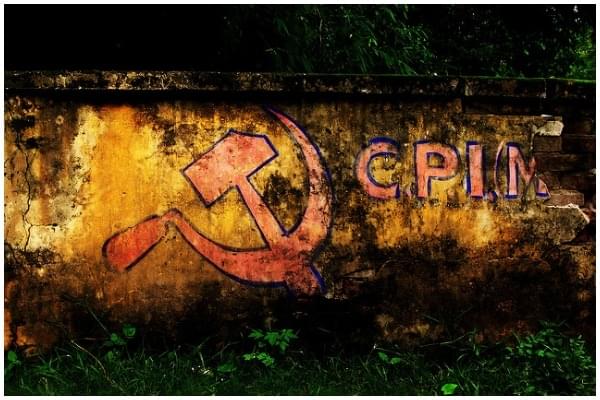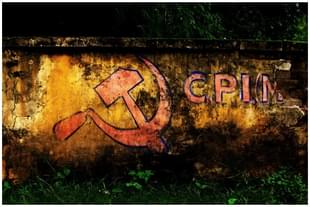Politics
Kerala Bypoll Witnesses Resurgence By Left, Setback For BJP; Time For State Unit Overhaul By Team Modi
Ananth Krishna
Oct 28, 2019, 11:46 AM | Updated 02:48 PM IST
Save & read from anywhere!
Bookmark stories for easy access on any device or the Swarajya app.


Along with the results of elections in Maharashtra and Haryana, various bypolls to state Assemblies were also conducted. This included five constituencies in Kerala — Manjeshwaram, Ernakulam, Aroor, Konni and Vatiyoorkavu.
While the by-election in Manjeshwaram was tied to the death of the sitting MLA, the rest where triggered by the resignation of MLAs after they were elected to Parliament in 2019.
The 2019 General Election was a washout for the Left, having won only a single seat out of the 20 on offer in Kerala.
The gulf of the vote share difference between the Communist Party of India (Marxist) (CPM)-led Left Democratic Front (LDF) and the Congress-led United Democratic Front (UDF) reached an all-time high of 12 points.
The depth of their defeat led to some amount of self-reflection by the Communists, which was reflected in a mass feedback exercise that they organised.
The outreach seems to have helped, with the Left winning two seats (Konni and Vatiyoorkavu) and the UDF three (Manjeshwaram, Ernakulam and Aroor) in the bypolls.
Kerala’s electorate is known for their wild swings in voting patterns every five years, with the two fronts alternating power since 1982.
While the 2019 General Elections where a wipe out for the Left, the bypolls secured significant relief for them.
A significant swing in the votes indicates volatility in the electorate. The Left wrested Konni, a seat that has continuously been held by now Congress MP Adoor Prakash since 1982 as well as Vatiyoorkavu, a seat where the Nair Service Society (NSS), a caste organisation inimical to the Left since Sabarimala, has significant sway.
The lone sore point was the loss of Aroor to the Congress. The BJP, meanwhile, has proved to be a dud in the state yet again, having failed to make significant headway anywhere.
The BJP Central leadership needs to take a long, hard look at the state unit to eliminate factionalism and improve cadre morale and reach.
The results seem to indicate that the Sabarimala effect on the electorate has subsided, and the gains made by the BJP in the 2019 General elections are being mitigated.
The Left was on point with candidate selection, fielding the popular Thiruvanathapuram mayor V.K. Prasanth from Vatiyoorkavu and Independent Manu Roy from Ernakulam, who came close to beating TJ Vinod of the Congress.
The Congress, which benefited from double consolidation last time, did not reap the benefits of an anti-Hindutva vote in the bypoll to the Legislative Assembly.
The Sabarimala issue was a decisive factor that shifted votes from the Left to the UDF and BJP.
However, two constituencies where Sabarimala shifted votes — Vatiyoorkavu and Konni — did not see the same pattern this time around.
Konni, which is in Pathanamthitta district (where Sabarimala is situated) witnessed a three way split in the May General Elections:
The difference between the BJP and the CPM was a mere 440 votes, but come October, the difference is palpable:
The polling percentage in Konni had only a small dip of 3.12 per cent in the bypolls compared to the General Elections.
The BJP fielded the strongest candidate — State General Secretary K. Surendran — who gained a substantial following for his role in the Sabarimala agitations.
However, this did not produce the expected results, even though the BJP improved its performance from the 2016 Legislative Assembly elections when it polled a mere 16,000 votes.
Another monument to the BJP’s failure is Vatiyoorkavu in Thiruvanathapuram district.
In the 2014 General Elections, O Rajagopal had actually polled more votes in the Legislative constituency.
In the 2016 Legislative Assembly Elections, Kummanam Rajashekaran, the then state president of the BJP, lost the election to K. Muraleedharan by around 7,000 votes.
In the 2019 General Elections, Kummanam, who returned as a candidate for the Thiruvanthapuram Lok Sabha constituency, polled 50, 709 votes (37.39 per cent) compared to Tharoor’s 53,545 votes (39.48 per cent).
CPI’s C. Divakaran was in distant third place with only 29,414 votes (21.04 per cent).
In the bypoll, the popular Thiruvananthapuram mayor, V.K. Prasanth, proved the decisive factor for the Left, winning more than 50,000 votes and beating the Congress candidate by a margin of 10, 000. The BJP candidate was placed third with only 27,000 votes.
The bypolls in Kerala has proven to be a much needed respite for the Left, having also won the Pala by poll conducted earlier.
It must, however, be kept in mind that the Left has a stronger cadre base and, therefore. performs better in bypolls and local elections.
The UDF has much to learn, considering its near defeat in Ernakulam and losses in Konni and Vatiyoorkavu.
The bypolls, meanwhile, have shown that the gains made by the BJP in the 2019 election might not be sustainable.
The loss of face in finishing a distant third in Vatiyoorkavu and the third straight electoral defeat of the their most bankable face in Konni, means that the party in the state and the central leadership has some long, hard thinking to do.
The appointment of state president P.S. Sreedharan Pillai as the Governor of Mizoram — something that was earlier given to earlier state president Kummanam Rajashekaran — paves the way for a reorganisation.
The party faces great odds to make a dent in Kerala polity, and urgent intervention by the Central party apparatus is necessary.
The 2021 Legislative Assembly election looms ahead, and before that, the 2020 local self-government elections is to be fought.
Ananth Krishna is a lawyer and observer of Kerala's politics.





